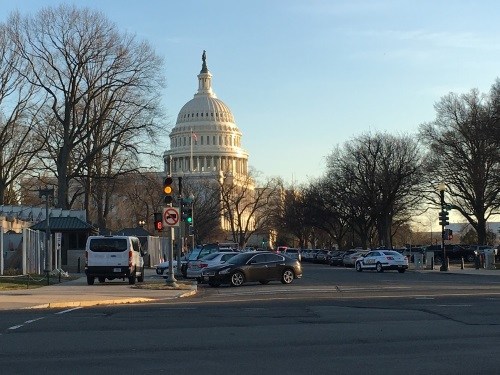State departments of transportation are getting $10 billion in long-awaited emergency aid from a $900 billion COVID-19 relief measure passed by Congress late on December 21 as part of a final year-end legislative package. President Trump is expected to sign the measure later this week.
The House of Representatives passed the legislative package that included the COVID-19 rescue bill by a vote of 359 to 53, with the Senate passing it by a vote of 92 to 6.
“Since the early response to the pandemic, state DOTs have faced severe losses in state transportation revenues as vehicle travel declined. This COVID relief bill enables state DOTs to stay on track and support the efficient movement of critical goods and services as they maintain their transportation systems,” noted Jim Tymon, executive director of the American Association of State Highway and Transportation Officials, in a statement.
“Furthermore, this timely federal support will help state DOTs to retain their institutional capacities and to be prepared to deliver future infrastructure investment driving economic recovery and growth,” he added.
The massive 5,593-page bill that includes the $900 billion COVID relief measure also includes a $1.4 trillion fiscal year 2021 omnibus appropriations package and various other pieces of pending legislation – including the reauthorization of the Water Resources Development Act.
According to an analysis by AASHTO’s policy team, the $10 billion worth COVID-19 relief set aside for state DOTs must be apportioned by the Federal Highway Administration within 30 days of the bill’s enactment and will be based on each state’s share of obligation limitations within the recently extended Fixing America’s Surface Transportation or FAST Act.
AASHTO’s analysis also indicated that the relief money can be used by state DOTs to fund Surface Transportation Block Grant-eligible projects as well as for preventive maintenance, routine maintenance, operations, and personnel – including employee and contractor salaries – along with debt service payments, availability payments, and coverage for other revenue losses.
The organization added that the relief funds – available for obligation until September 30, 2024 – could be transferred to public tolling and ferry agencies for costs related to operations, personnel, salaries, contractors, debt service payments, availability payments, and coverage for other revenue losses, and are not subject to existing federal restrictions on tolling revenues.
Additionally, funds spent on maintenance and administrative expenses are not required to be included in either metropolitan or statewide long-range transportation improvement programs.
In terms of the FY 2021 Transportation and Housing and Urban Development funding approved as part of this broad fiscal package, some $46.365 billion is provided for Federal-aid Highways obligation limitation along with a nearly $2 billion in general fund supplement to help support a highway bridge rehabilitation program. That supplemental program based on 2018 National Bridge Inventory data for calculation purposes similar to prior fiscal years, AASHTO noted.
Finally, the approval of the Water Resources Development Act of 2020 within this broad legislative package includes key points for state DOTs as well, AASHTO said. For starters, it fully authorizes water infrastructure and navigation programs including for dredging needs of emerging harbors, donor and energy transfer ports, commercial strategic ports, and Great Lakes Harbors. It also authorizes 46 water resources projects along with eight project modifications for previously authorized projects and allows for spending down of existing balances – amounting to roughly $10 billion in total – within the Harbor Maintenance Trust Fund.

